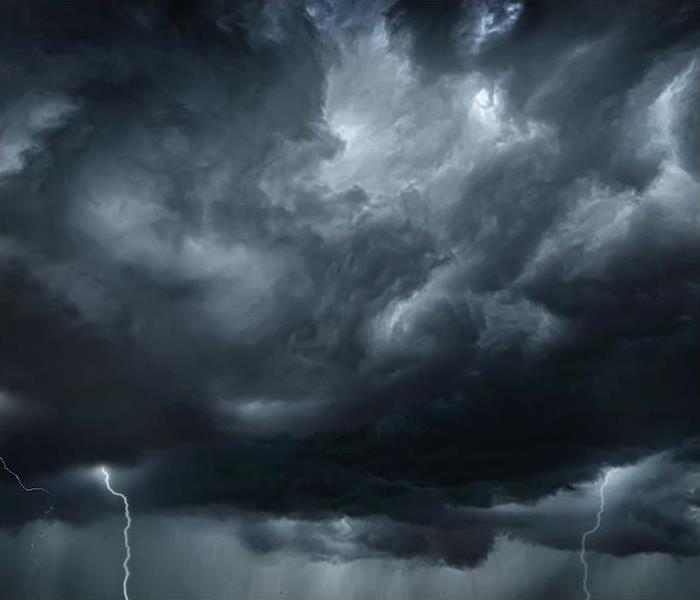Have You Planned Ahead for Severe Weather? | SERVPRO® of Cedar Mill/Oak Hills
5/19/2022 (Permalink)
 If you discover storm damage to your home or business, reach out to SERVPRO of Cedar Mill/Oak Hills right away.
If you discover storm damage to your home or business, reach out to SERVPRO of Cedar Mill/Oak Hills right away.
Extreme weather is often a scary experience, and rightly so. Severe storms cause a number of different events that all have the ability to damage your home and yourself. Events like lightning, flooding, hail and powerful winds are just a few of the dangerous effects of storms—and storms are very common.
In fact, there are around 100,000 thunderstorms throughout the United States every year, which is more than 2,000 per week.
In the Pacific Northwestern United States, Oregon to be specific, we know the dangers that come with severe weather. We experience some of the most rainfall in the country and suffer powerful windstorms that have done enormous amounts of damage to our community.
Unfortunately, the weather we see so often is here to stay, and we can’t wave a magic wand to make it disappear. However, we can—and absolutely should—prepare and be ready for it, which is what we hope to convey today.
Your Severe Weather Communication Strategy
The only thing as important as your safety during nasty weather is your ability to communicate with your family and local government. Knowing what all of the emergency alerts mean is key and being able to receive updates from the authorities is important, too.
For staying in touch with your local government, you should ensure that you have multiple ways of receiving information. Cell phones work great for this, but storms can often prevent you from having an adequate cell signal. It’s recommended that you have a NOAA weather radio, as these have been proven to work even during the most severe weather.
Next, you should develop a proper communication strategy for yourself and your family. This includes a plan on how to communicate when extreme weather is inbound—this allows everyone to check in and have peace of mind with regard to their loved ones.
Beyond that, designate a safe room in your house that is as close to the center as possible and away from any windows or doors. Basements and bathrooms often work well, but it’s most important to ensure that your shelter area is structurally sound.
Your Severe Weather Emergency Kit
An emergency kit is a relatively simple way to stay prepared and reduce the risk of being negatively affected by storms. These packs should contain any essential item that you and your family may need for a minimum of 72 hours of sheltering and should be stored in your designated safe room for ease of access.
Typically, these kits contain nonperishable foods, flashlights, batteries and any first-aid supplies that you might need. As a rule of thumb, you should keep one gallon of water per person, per day, in your emergency kit. However, each kit should be designed specific to your needs, and you might have to include items not listed here.
Your Severe Weather Aftermath Checklist
When the dust settles, it’s critical for you to take steps that can improve your safety plan and assess the level of damage that your property has suffered. After you’ve received the all-clear, check your property for damage.
Places like doors, attics and windows are often the most affected and can allow water to enter the home once their seals have been broken.
If you discover damage, remember that you can call us 24⁄7. Our expert team in green has a trusted reputation with over 50 years of restoration experience, and we provide a quick response that helps you deal with the problems fast. Always act immediately when you find damage to your home, and call SERVPRO of Cedar Mill/Oak Hills for any and all of your cleanup and restoration needs.
If you discover storm damage to your home or business, you can count on SERVPRO to handle the restoration. We’re here 24⁄7 to spring into action—get in touch with us today.






 24/7 Emergency Service
24/7 Emergency Service